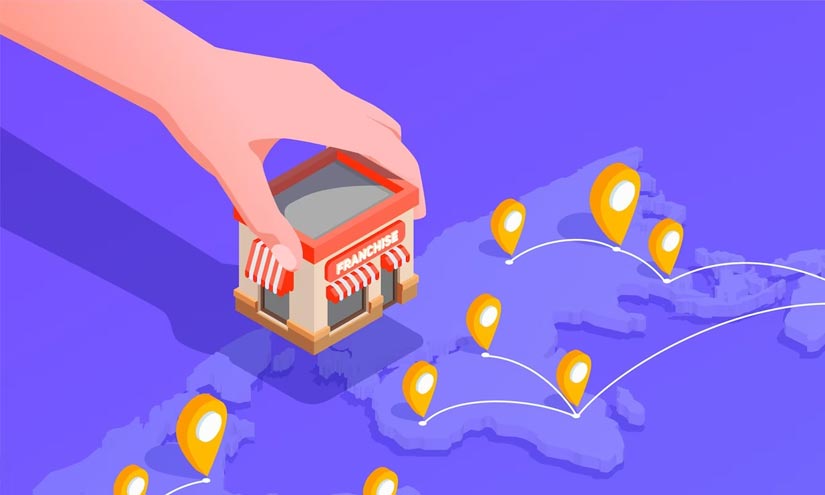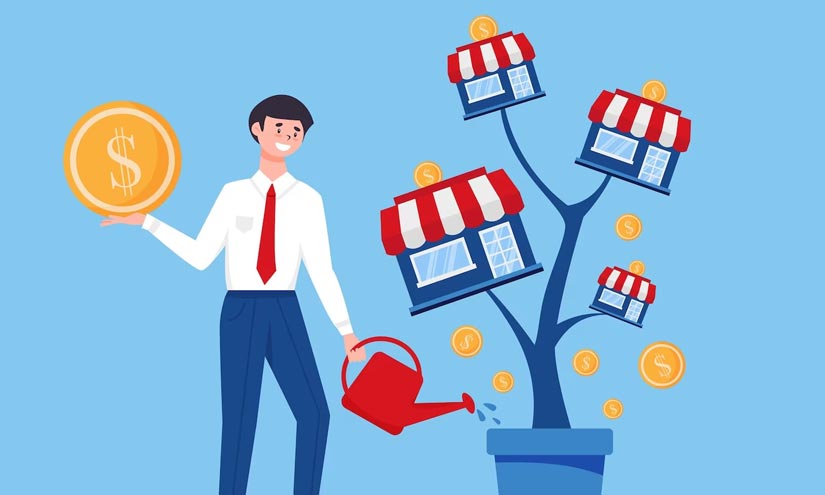In any business, understanding the different types of customers is crucial to success. Knowing how to handle every kind of customer can help enterprises build relationships, increase customer satisfaction, and drive sales.
In this article, we will explore 16 types of customers and discuss how businesses can best cater to their needs.
Table of Contents
1. The Sherlock Holmes of Shopping
These modern knowledgeable consumer shoppers are like detectives on a mission to crack the case of the perfect purchase. They investigate product descriptions, compare prices, and interrogate reviews to ensure they make informed decisions.
So don’t be surprised if they enter your store armed with a magnifying glass and a notepad!
2. The Store-Sneak
The store-sneak is a master of disguise, slipping into physical stores unnoticed to scope out the goods.
But don’t be fooled by their stealthy moves because they’ll whip out their smartphones in a flash to compare prices, read reviews, and purchase online. So traditional retailers, beware; this shopper is sly and savvy!
3. The wandering nomad
These are the traveler customers who roam into your store without any real purpose or destination. Maybe they’re lost or want to take a break from their aimless wandering.
Either way, they’re there and might be looking for a little retail therapy to spice up their day. But, unfortunately, for retailers, the wandering nomad can be a wild card.
You never know what will catch their eye and excite them to purchase. But by creating an inviting atmosphere and offering unique and interesting products, retailers can capture the attention of these wandering souls and turn them into loyal customers.
To win over the wandering nomad, retailers might consider setting up a cozy lounge area or offering complimentary refreshments to make them feel at home. And who knows? They might stick around long enough to become regular visitors.
4. The get-in-get-out client
A client on a mission – These customers are like ninjas – they know exactly what they want and are on a mission to get it as quickly and efficiently as possible.
They’re not there to chat, browse, or smell the roses – they’re there to score their loot and return to their busy lives. For retailers, the get-in-get-out client presents a challenge – how do you make a lasting impression on someone halfway out the door?
The key is to streamline the shopping experience and make it as painless as possible. That means clear signage, organized displays, and a speedy checkout process.
Retailers might also consider offering some extra perks for these speedy shoppers, like curbside pickup or self-checkout options. By catering to their need for speed, retailers can turn these get-in-get-out clients into satisfied customers who are more likely to return.
5. The undecided or uncertain shopper
The “I don’t know what I want” shopper can be a tricky customer. They’re drowning in information or need to determine what they want. Therefore, retailers must provide a personalized and informative shopping experience to make them feel more comfortable.
From product demos to virtual try-ons, providing access to relevant information can help build trust and confidence in the customer. The goal is to make them feel empowered and informed to make a confident purchasing decision.
6. The bargain-hunter or penny-pincher
These Price-shoppers prioritize cost over brand loyalty and are willing to spend time comparing prices and searching for discounts. As a result, retailers can cater to them by offering competitive pricing, promotions, and price-matching policies.
Technology like comparison shopping tools and real-time price updates can enhance their experience. In addition, loyalty programs and rewards can incentivize repeat purchases and build brand loyalty.
Ultimately, providing a value-focused shopping experience that prioritizes competitive pricing and discounts can win over penny-pincher customers.
7. The talkative client
You know those clients who can’t stop talking? They’re like a never-ending stream of consciousness that occasionally drowns out your ability to focus.
They can also be entertaining and share exciting stories. You must be like a polite bouncer, setting clear boundaries without ruining the fun of managing them. Redirect the conversation subtly and show some empathy; you’ll both come out of the interaction happy.
8. A challenging customer
Some customers are like porcupines: prickly, defensive, and hard to approach. But don’t worry; you don’t need to be a vet to handle them. Instead, stay calm and listen to their concerns. By validating their feelings and finding common ground, you can help to turn a negative situation into a positive one. And if things get too heated, don’t hesitate to call for backup!

9. A trusted customer
The best shoppers in your store are those who already love you – the regulars. They’re like groupies, but instead of following a band, they follow your brand! No need to put the hard sell on them; they’ll happily hand over their cash because they trust you.
A Loyal Fan is like a unicorn for any business. They’ve stuck with you through thick and thin, and they’re not going anywhere. These customers are the backbone of your business and provide a steady stream of revenue. Plus, they’re great for your ego!
Not only do Loyal Fans bring in the dough, but they’re also an excellent source of feedback. They’ll tell you what’s working and what’s not and give you valuable insights into your target audience.
Take their suggestions seriously and watch your business grow. And don’t forget; Loyal Fans are the ultimate hype crew. They’ll rave about your company to anyone who will listen, bringing in new customers and building brand awareness. So treat them well because they’re worth their weight in gold!
10. The recipient
The Gift Hero During the holidays, the Gift Hero is in full swing. They’re the ones who buy your products to save the day and make their loved ones feel special. It’s like they’re wearing a cape! The Gift Hero is a vital customer type to consider during gift-giving occasions.
They’re not just buying for themselves; they’re trying to make someone else’s day. So it’s crucial to understand the relationship between the gift-giver and recipient and provide products that fit the occasion. And let’s remember the presentation!
The Gift Hero wants their gift to look top-notch, so ensure you have attractive packaging and gift-wrapping options. Bonus points if you make it easy for them to check off their whole list in one stop!
Providing excellent customer service to the Gift Hero is vital. They may have questions or need help selecting the perfect gift, so be friendly and knowledgeable. Remember, a happy Gift Hero means a happy recipient and, potentially, a loyal customer for life.
11. Impulsive Customer
Dealing with impulsive customers can be tricky. They act fast and might regret their purchase later on. So, providing them with clear and concise information about the product is essential.
You can even take them on a guided tour or provide visual aids like pictures or videos to excite them. Just be transparent about any product drawbacks to managing their expectations.
And remember to follow up after the sale to ensure their satisfaction and build a lasting relationship.
12. Skeptical Customer
Skeptical customers can be a tough nut to crack for businesses. They often don’t trust salespeople and need extra reassurance before purchasing.
To win them over, businesses should provide detailed information, be transparent about pricing and fees, offer trial periods or money-back guarantees, and provide customer reviews and success stories.
By building trust and showing that the product or service meets their needs, businesses can create a positive shopping experience and build customer loyalty. Remember, patience and understanding are critical when dealing with skeptical customers!
13. Tech-Savvy Customer
Tech-savvy customers are a highly influential and tech-savvy segment of the market. Businesses must adapt to their online habits and preferences to effectively reach and engage with them. A robust online presence and digital marketing strategies are essential to connect with this customer type.
Businesses should focus on creating a website that is easy to navigate and provides detailed information about the product or service. Customer reviews and testimonials are also essential to build trust with tech-savvy customers, who heavily rely on social proof and peer recommendations.
Digital marketing strategies, such as social media marketing, SEO, and email marketing, can help businesses reach and engage with tech-savvy customers. A seamless online purchasing experience is crucial to drive sales.
By catering to the needs and preferences of tech-savvy customers, businesses can create a positive shopping experience and build long-term customer loyalty in the digital marketplace.
14. Trendy Customer
To attract trendy customers, stay up-to-date on the latest fashion trends, offer exclusive products and promotions, collaborate with popular influencers, and maintain a solid social media presence.
The goal is to create buzz and build a community around the brand to draw in these fashion-forward customers.
15. Quality-Focused Customer
These customers want the best and are willing to pay for it. To impress them, highlight the product’s quality and offer a warranty.
Consistency is critical, so maintain high standards and continuously improve to retain their loyalty. Provide detailed specs and positive reviews to convince them of the product’s quality. Just don’t try to sell them a fake Rolex.
16. Environmental Customer
These customers care about Mother Earth, so businesses should be too. Promote eco-friendly products and be transparent about environmental impact.
Use sustainable materials, reduce waste, and offer recycling programs to attract and retain these environmentally-conscious customers. Remember, green is the new black!
Conclusion
Every customer is unique and has different needs and preferences. Businesses that recognize and cater to these differences can establish long-term customer relationships and stand out in a competitive marketplace.
In addition, by understanding the 16 types of customers we’ve discussed, businesses can develop strategies to engage and retain customers, ultimately leading to increased sales and success.



















